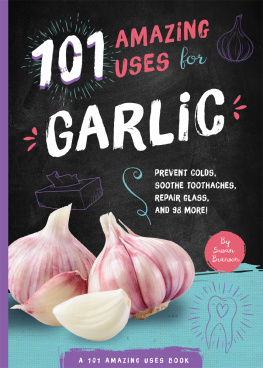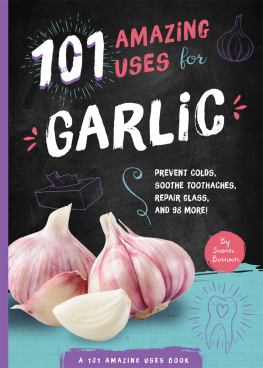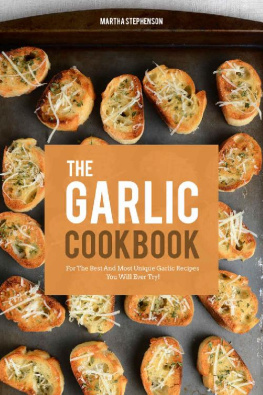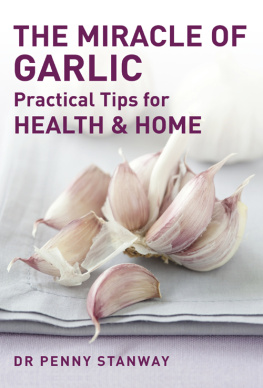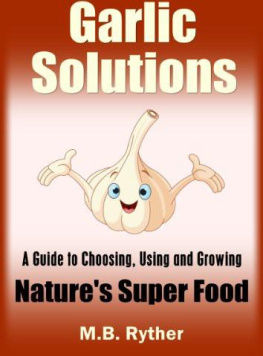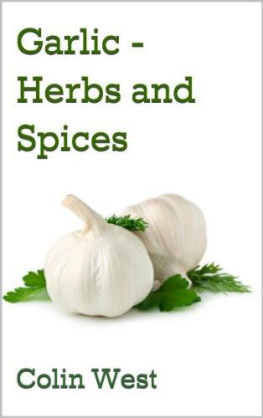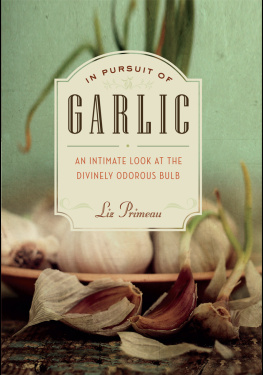The Magical Powers Of Garlic
How To Use Garlic In Everyday Life To Improve Your Health And Looks
By Jane Hanson
Copyright 2014
by

All rights reserved. No part of this book may be reproduced or transmitted in any form or by any means, electronic or mechanical, including photocopying, recording, or by any information storage and retrieval system without the written permission of the author, except where permitted by law.
Table of Contents
Introduction
Nature has many surprises in store the vast amount of resources available from nature can be used in many different ways, as long as we remember not to exploit them. We need resources from nature for basic survival we obtain food and clothing from nature. Hence, it is obvious that we depend on nature for other benefits as well, such as health, beauty and decoration.
Man has needed the plants and trees around him since forever. That was the case in the past, and it has not changed one bit. We are still highly dependent on flora for providing us with a lot of things we need. When one speaks of flora, however, it is often the trees that get maximum credit and for good reason, at that they provide us with food, firewood and rubber, amongst many other extracts.
However, we need to make sure the humble herb does not remain forgotten. Herbs are used as frequently as any other natural resource, and yet, we do not give them nearly enough credit. Herbs have found their way into traditional and modern medicine, apart from being used in cooking to improve the flavor dramatically.
One such well-known herb is garlic the humble ingredient in many of our delicious recipes. What many people do not know is that it has many advantages apart from adding that special taste to food. It has many remarkable health and beauty benefits that many people are not aware of. Hence, this eBook wishes to highlight the lesser known benefits of garlic.
This is in order to ensure that you can make sure the herb forms a part of your daily life, and make full use of it. Plants enrich lives; read on to find out just how!
Chapter 1: Garlic and How It Can Be Grown
Garlic has been used by human civilization for thousands of years. It is scientifically referred to as Allium sativum , which makes it a part of the genus Allium . To put it simply, this means that garlic is closely related to onions and shallots. It also means that garlic is a bulb.
These plants can grow to be about 4 feet tall, and produces flowers as well. The origin of garlic has been traced back to southwestern Asia, where garlic and its descendants are still widely used. Garlic has hundreds of varieties, but is divided into two subspecies hard-necked garlic and soft-necked garlic the major difference between the subspecies is the weather in which they thrive and grow best.
There are numerous ways in which garlic can be used to benefit you. Hence, it would make a lot of sense to grow your own garlic, in your backyard. The process is relatively easy, and will prove to be advantageous for a really long time because of its multiple uses (which are elaborated upon in further chapters). Plus, growing garlic in your backyard means you will never run out of this flavorful ingredient that forms an integral part of many meals! The following series of steps must be followed if you wish to grow your own garlic:
- To start with, you need to choose the type of garlic you want to plant. There are hundreds of varieties; however, the difference between many of them is too little for the common person to notice easily. Hence, you are merely expected to choose the kind of garlic that is best suited to the region you live in. The appropriateness of the match between garlic and your backyard can be determined by several factors such as weather, humidity, and the kind of soil (with the most important factor being the weather).
You can receive information about the same either at the local market or the nursery. If possible, try to get the seeds from them. This will help you obtain the plant best suited for your region.
- Next, you need to find out which time of the year is best suited for you to plant the garlic. For most varieties it is either early spring, or mid-autumn hence, you need to follow climate charts and weather predictions to determine this.
- Choose a spot in your backyard that allows a lot of sun to reach it. Dig the soil well and make sure the texture is crumbly. Soil with a high clay percentage is not advisable if you want to grow garlic. Also make sure that you add manure to the soil before you plant it.
- Make sure you plant the larger cloves (also referred to as seeds) and that these cloves are not damaged at the base. Place the clove in the to a depth of about 5-6 cm, with the pointed tip of the clove pointing upwards. Cover the cloves with manure, or other forms of compost.
- Make sure you water the plants regularly; this is because garlic plants require moisture in order to develop roots. However, you must make sure that the soil does not permanently stay wet or dries up, as this may result in stunted growth. Gradually reduce the water provided to the plant.
- As garlic grows, the green stalks (called scapes) grow and form loops too. When these leaves start yellowing, it is a sign that the bulbs are mature and ready to be harvested. Another means of checking is being able to feel multiple cloves in a bulb. Harvesting season is usually the end of summer. After loosening the area around the bulb, pull it out wash it and let it dry for a few days.
- Store garlic in a cool and dry place. This can be achieved through placing it in a pot, or by hanging braids of dried garlic (and its leaves) in a cool and dry place.
The next chapter shifts the focus from how to grow garlic, to the reasons to grow garlic.
Chapter 2: Garlic and Its Health Benefits
Now that weve understood the biology behind garlic, it is time that we move on in order to find out the numerous health benefits of garlic. The conclusion of many research studies is that garlic is actually very helpful when it comes to health and can be used to combat a range of threats: from allergies to high blood pressure. These benefits are listed below.
Cardiovascular health
Garlic has been found to improve cardiovascular (heart and heart-related) health in numerous different ways.
- Blood thinning: The presence of the chemical compound Ajoene helps garlic thin the blood this reduces the possibility of clots and allows blood to flow more freely through the body.
- Blood pressure: Studies have shown that garlic (or intake of garlic supplements) helps in lowering the blood pressure of hypertensive patients. This is due to the compound Allicin found in garlic it blocks the activity of a protein named Angiontensin II, which is responsible for the contraction of blood vessels.
- Cholesterol: Garlic can help in reducing the levels of LDL and triglycerides, along with reducing the possibility of formation of arterial plaque.
- Free radicals: Garlic protects the heart from the free oxygen radicals which can cause a lot of damage to the heart.
- Atherosclerosis : Sulfur compounds in garlic have the ability to prevent the blockage of blood vessels and thus, are effective in combating atherosclerosis, which is the hardening of the arteries.
Cancer risk
Various studies proved that garlic reduces the chances of a person developing different kinds of cancer.
- Lung cancer: People who ate garlic at least twice a week were found to have a lower risk of developing this form of cancer. This means it could be a chemo-preventive agent.


